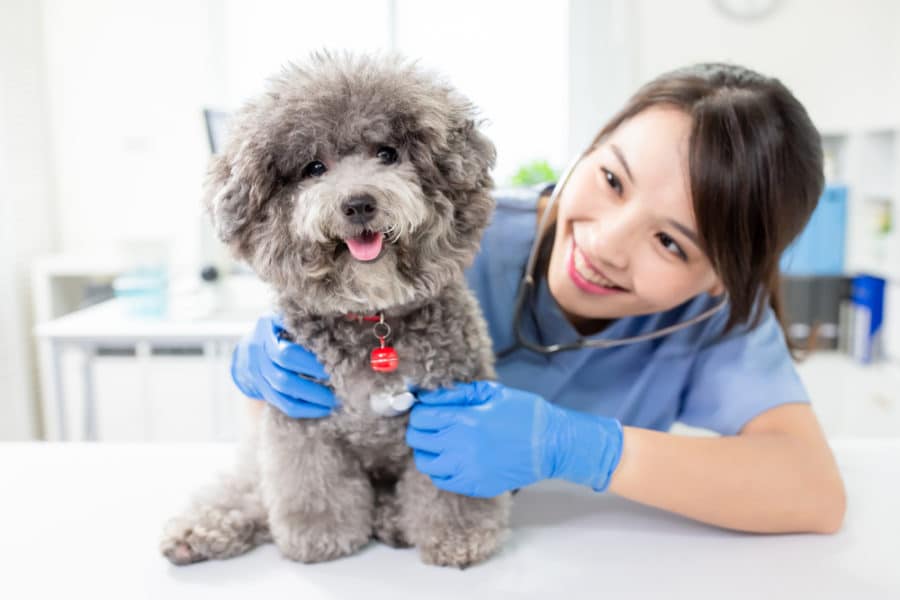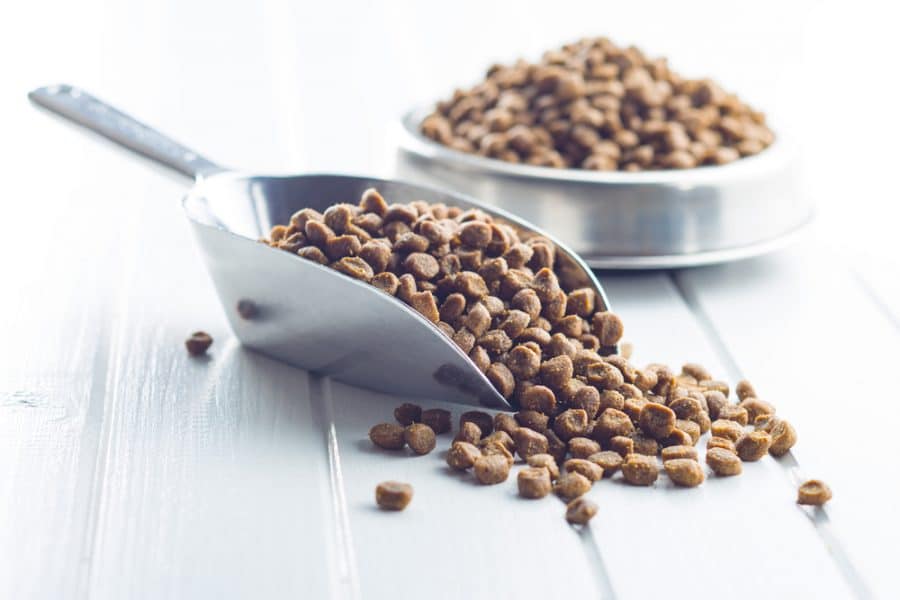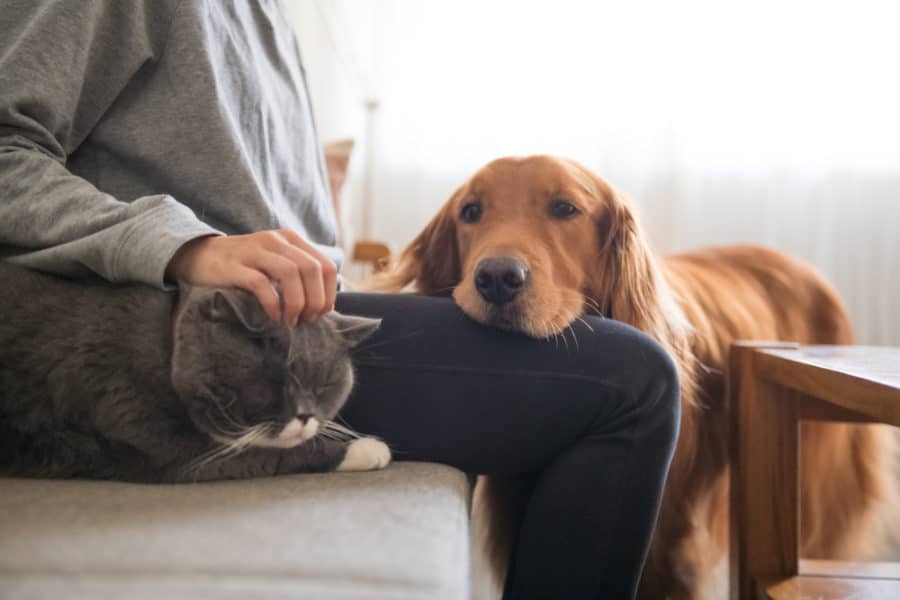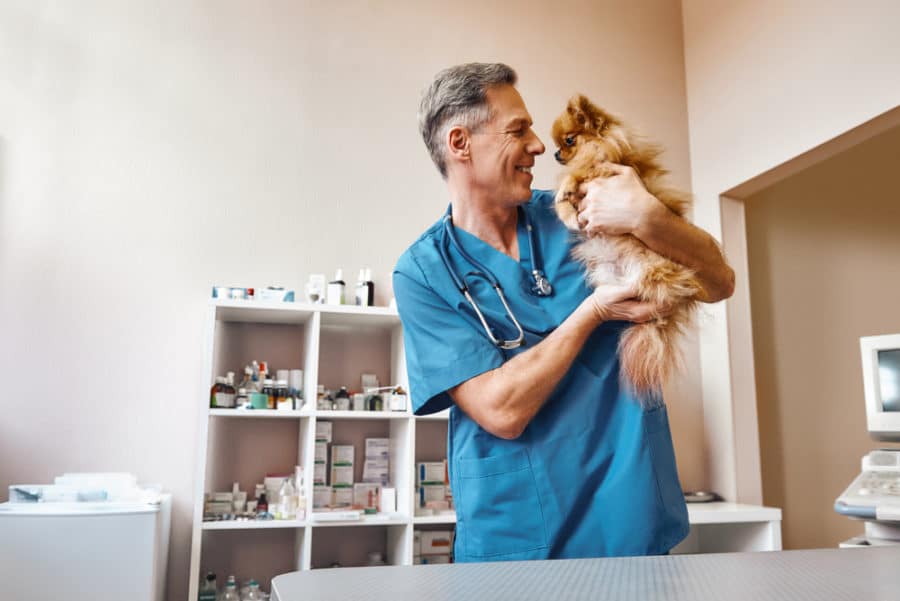An outbreak of H3N2 (canine flu) in 2015 caused a lot of alarm among pet parents. Take a look at how integrative methods can help with treatment and prevention.
It started in the Chicago, Illinois area earlier this year and has been popping up in other states, from California to New Jersey. This new and virulent type A canine flu virus (H3N2) originally came from Korea in 2007. It was initially an avian virus, but it has since adapted to affect both dogs and cats.
The virus causes upper respiratory signs – nasal discharge, cough, lethargy, decreased appetite and fever. It can progress to pneumonia and become life-threatening. Not all dogs and cats show all signs.
Because this current outbreak is not from the H3N8 flu virus (which was originally a horse virus), the currently available canine flu vaccine may not provide any protection from it.
Pneumonia is the biggest issue
The biggest concern with this particular virus seems to be how it opens the respiratory system to secondary bacterial infection, making bacterial pneumonia a more common sequelae to the initial virus. Antibiotics with good pulmonary activity are typically needed to help fight bacterial pneumonia. Holistic practitioners have found additional help battling this condition by using nutrition, herbs and essential oils.
Many alternative treatments can be used to help bolster the immune system and decrease the progression of the virus into pneumonia. It is reassuring to note that this is a seasonal flu virus, and so far, most animals have recovered well with sensible attention to their care using holistic and/or conventional treatments.
Prevention means keeping him strong and healthy
• Avoid contact with animals that may be shedding the flu virus.
• Avoid unnecessary vaccines and topical flea and tick pesticides during a flu outbreak. Vaccines and pesticides can temporarily distract or decrease the function of the immune system.
• Feed your animal a fresh, well-balanced diet, preferably raw and without chemicals, fillers and carbohydrates.
• Ensure he receives regular exercise.
• Consider supplements that help boost the immune system and fight inflammation, bacteria and viruses – these include turmeric, oregano, garlic and fish oils. Work with an integrative or holistic veterinarian to determine the correct dosage for your individual dog or cat.
Alternative treatment options
When an animal is showing flu signs, conventional medical treatment will include antibiotics, cough medicine, subcutaneous fluids and B vitamins. Alternative medicine options include the following:
1. Homeopathy
Homeopathic viral nosodes, and other homeopathic combinations for flu and colds, like Oscillococcinum or Bryonia, are effective for reducing signs, lowering fever and improving upper respiratory condition. They are effective and safe – especially for cats. They include ingredients like Belladonna, Aconitium napellus, Echinacea angustifolia, Eupatorium perfoliatum, Gelsmium sempervirens, Ferrum phosphoricum and Influenzinum. Often, animals in an epidemic need the same remedy, so homeopaths find the genus epidemicus by listing the symptoms of all infected animals, then finding a remedy with which to begin treatment. It’s sometimes necessary to find the simillimum, the matching remedy for each individual animal, to both deeply heal from the virus and build overall health.
2. Chinese herbs and other supplements
• Six Gentle Pets is a very effective Chinese herbal combination that can reduce phlegm and decrease coughing.
• Colloidal silver, either in a nasal spray or as an oral supplement, may also be beneficial.
• Antibacterial and antiviral herbs and supplements can also be used separately.
3. Acupuncture
Acupuncture and aquapuncture (with Traumeel or vitamin B12) may be helpful for the immune system, but the contagious nature of this virus makes it difficult for repeated vet visits. Points should be chosen as dictated by exam, and may also include BL13 (wind/cold in lung), LU7, 9, 10 (circulation/clearing/fever lung), GV14, 20 (immune system), BL10 (local release of muscle tension from cough), 11 (lung), and LI11 (wind invasion).
4. Massage
Massage can often do what no medications can. It improves circulation, increases drainage of lymph and phlegm, and relieves pressure from inflammation. It also provides emotional support to an ailing animal. In addition to general massage techniques, animals can get relief from small circle massages around the eyes and face and over the neck, and from upward strokes across the thorax and ribs.
5. Steam with essential oils
To help decrease coughing in a dog (caution must be observed with using essential oils in cats), put him on a bed on the bathroom floor for a few minutes, with a hot shower running nearby. Put three to four drops of any of the following essential oils on a cotton ball, and put it in the bathroom too:
• Thieves oil (also an effective antiseptic agent for surfaces)
• Eucalyptus oil
• Peppermint oil
• Sage oil
• Oregano oil
The smell shouldn’t be too strong, just noticeable. Remember, an animal’s sense of smell is over 20x stronger than ours, so don’t stress him out with too strong a scent. Be very careful not to overheat the dog, especially if there is a fever involved.
As worrying as H3N2 is, there’s no need to panic. Do what you can to prevent illness in your dog or cat as outlined earlier, stay alert for any respiratory signs, and take him to the vet if he seems “off color”.
Editor’s note
On May 7, 2015, IDEXX Laboratories, Inc. announced that they had developed, validated and made available a test for the detection of H3N2. The H3N2 Influenza Virus RealPCR Test allows for specific testing for the strain responsible for the outbreak.
“We have developed an accurate diagnostic for this canine influenza strain to ensure that veterinary practices across the country are equipped with the tools they need to provide the best possible care to their patients, and to help contain this outbreak and keep it from spreading further,” says Dr. Christian Leutenegger, head of PCR molecular diagnostics. You can learn more at idexx.com/canineh3n2.








